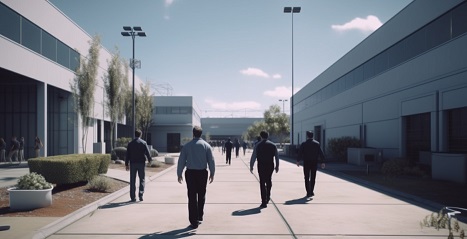Online Induction >> Check Lists
Published 23/12/2024
Construction Pre-Start Checklist: Best Guide and Setup Examples
 Why a Pre-Start Checklist?
Why a Pre-Start Checklist?
Construction is a process that requires thorough prior planning. It is not a one-day process that you will wake up and start laying the foundation or ordering construction materials. Every step in the construction process is planned before the actual work is done. This pre-planning process is not an easy task when the relevant tools are not available. Well, what is the best tool for the construction pre-start process?
It is a pre-start checklist that simplifies the process. All activities, including but not limited to seeking client requirements, the definition of project scope, and access to the project feasibility, flagging potential issues, and acquiring the required permits, are some activities undertaken in preparation for a construction project.
Before commencing the actual construction, the client and general contractor do all pre-start activities to evaluate the project's worthiness.
This might form part of your
Contractor Induction toolset for contractors and be used on mobile through a
pre-start checklist app.
Example Fields
- Project and site details
- Safety issues and Reports
- Any changes to the conditions or environment before job activity begins?
- Exact Work Locations
- Job task or activity
- Safety Communications
- Hazards and Risks
- Work permits required / linked to Permit to Work
- Sign off
View Pre-Start Templates, Forms and Examples

Stages for Construction Pre-Start Checklist
1. Initial meeting
The first step in a construction project is meeting with the stakeholders to discuss the project. The meeting is chaired by the client and the contractor who will carry out the project. The main agenda in the meeting is usually discussing the project's worthiness and the possible outcomes.
2. Planning the design
The contractor solely does this work under the client's guidance. The client sets the expectations, and the contractor comes out with the best designs to deliver the expected outcome.
3. Cost estimation
The contractor tables the expected budget after factoring out all possible costs required for the project's completion. Not all costs proposed are considered because cost-saving techniques are used to cut non-essential costs.
4. Managing project scope
The project goals, tasks, deliverables, and budget are determined and documented. The significance of managing project scope is smooth project modification as it is hard to evade unplanned modifications.
5. Identifying and outlining potential issues
The project deliverables and outcomes are researched to systematically identify potential problems that help decision-making and problem-solving. Stakeholders brainstorm potential alternatives to solve problems.
6. Determining options for value engineering
The project is simplified to reduce the cost of construction. As planned, every step should add value to the project to render the best outcome. Value engineering in construction projects questions whether the materials and processes required will be appropriate and economical.
7. Site selection and study feasibility
The early stages of construction involve identifying potential consenting and development constraints that may influence the final project location. The feasibility study helps in reducing project risks associated with the project location.
8. Evaluation of soil condition on site
The soil where the project will stand must be robust to support the building. A visual test and soil investigation must be carried out to evaluate the bearing capacity, and position of the water table to predict the behavior of the foundation.
9. Checking existing utilities
Construction projects require utilities that are used by the public. Surveying the location to identify the utilities available such as water, electricity, gas, sewage, roads, communication services, etc., marks the last steps for the pre-start construction process. These services are in public control, and you need to inform them before starting the construction process.
10. Determine the required equipment
Construction projects require the utilization of heavy machines. Determining the size of the machines required is important because some of them require to be hauled by other machines, thus adding to the cost of the project. It is wise to avoid machines that you cannot haul from one site to another.
11. Check for green building options.
After thinking of a construction project, the next step is usually thinking about the immediate environment where the project will be located. The impact of the project on the environment matter to the public.
Going for green options other than competing options is better for the environment's sake. The building materials to be used need to be discussed and vetted to eliminate the ones that will have a negative impact.
12. Outline client and contractor contingencies
Constriction project scope changes and affect the cost. Mostly, when the scope change, the cost increase rather than decreases so the client allocates extra funds to cater to unplanned changes.
Construction projects are one of the critical processes that need proper planning because faults can claim the lives of many and damage the environment. Having a pre-start checklist will help eliminate risks and cut costs. Checklists are easy to follow and track changes because once an activity is done, it is marked in the corresponding box.
Library of Pre-Start Check Lists
Plus many more. Try creating your own!
Try Creating a Pre-Start Checklist Using our Checklist Builder

 Why a Pre-Start Checklist?
Why a Pre-Start Checklist?







